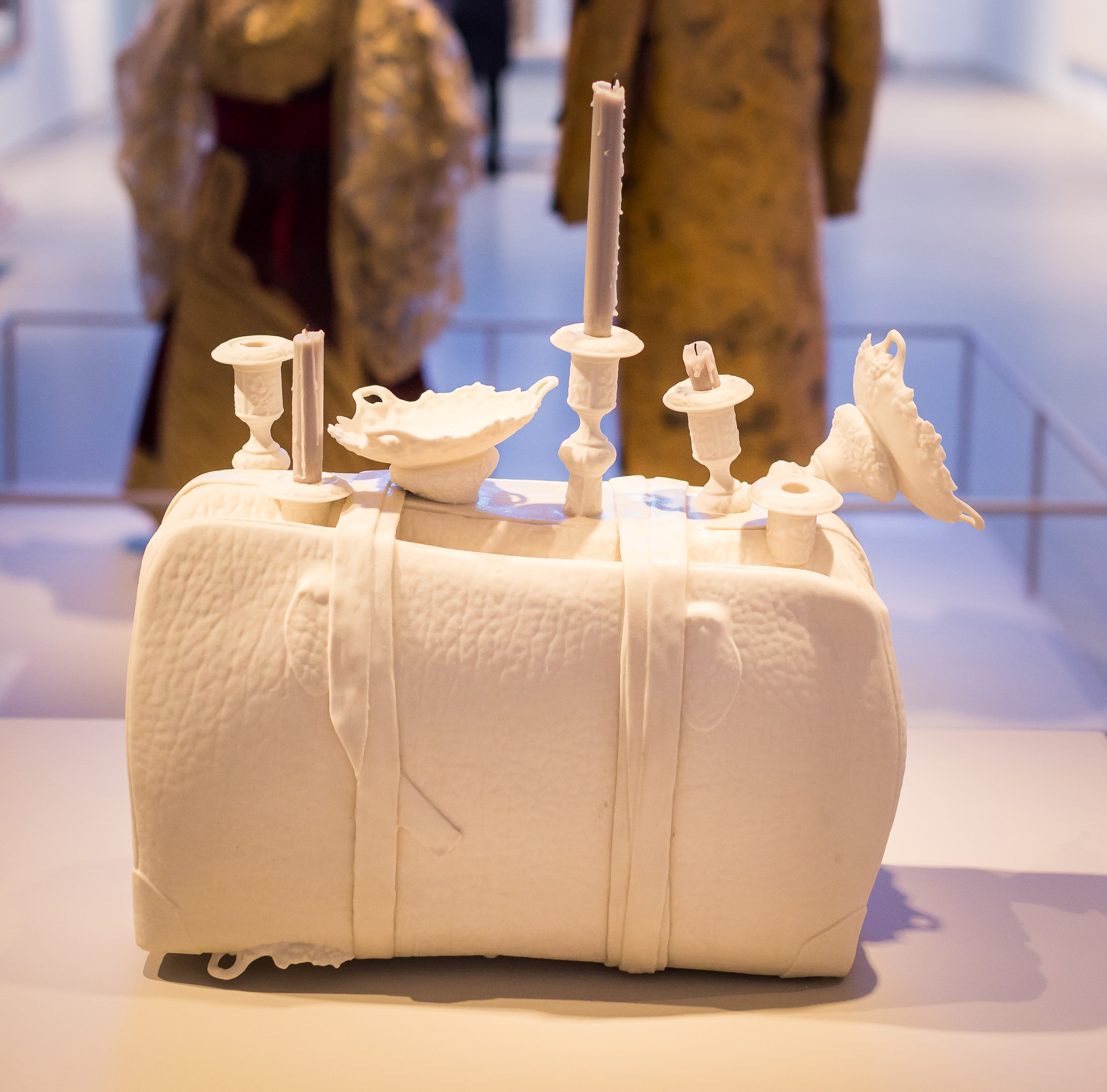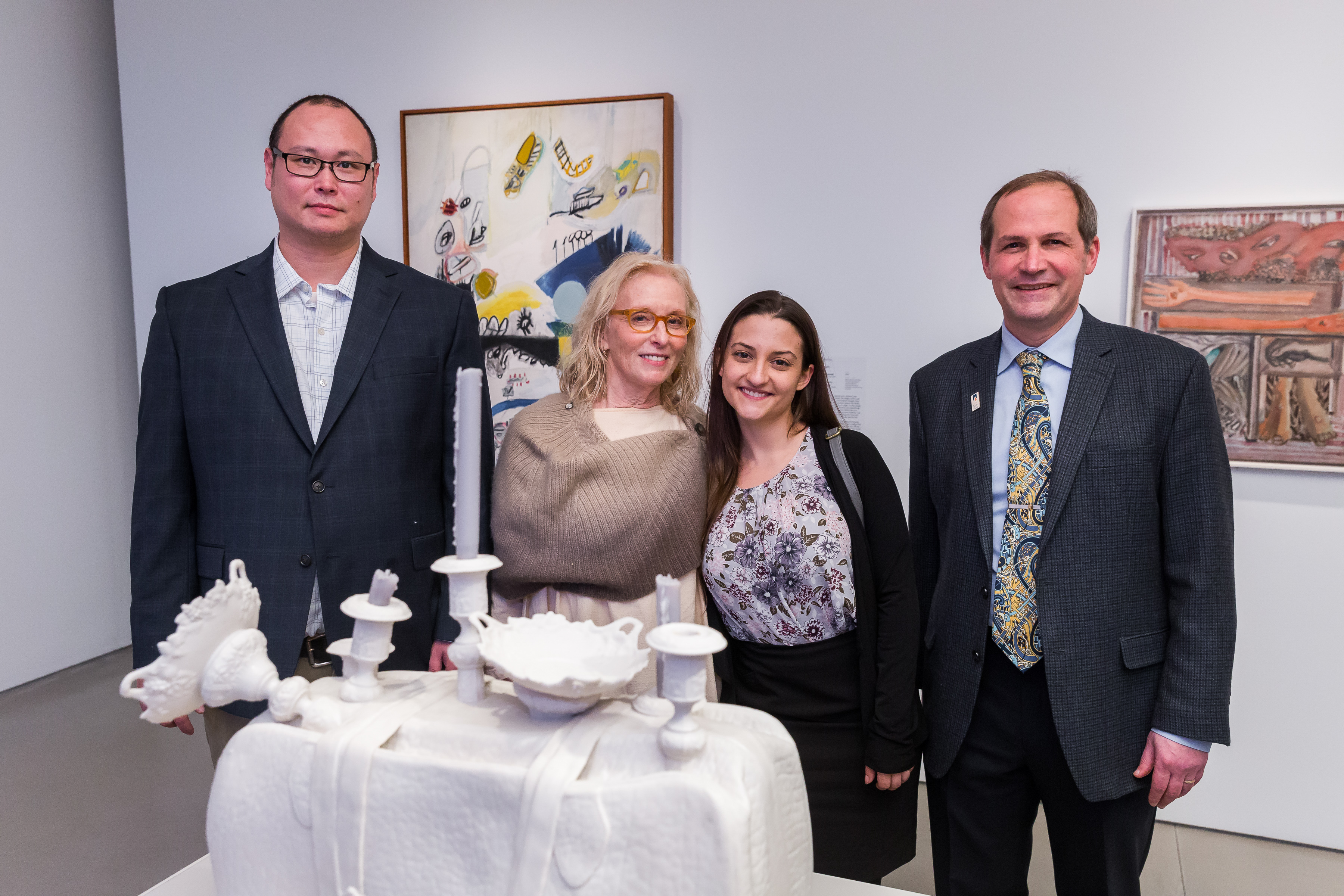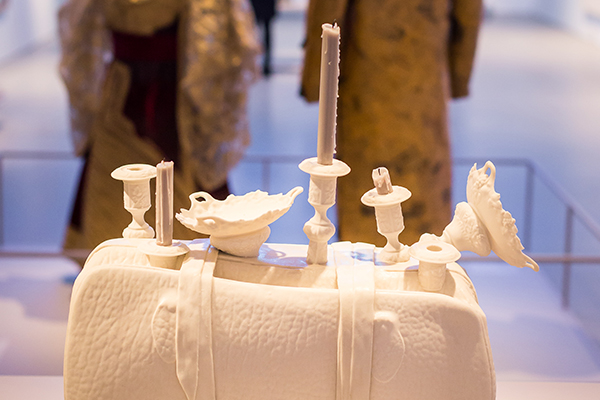Sculptor’s ambition becomes reality, with an assist from HVAMC

When artist and educator Arlene Shechet was commissioned to make a contribution to a new exhibition, titled “Scenes from the Collection,” at the Jewish Museum in Manhattan, she looked to her own family’s history for inspiration.
“I wanted to do something that was very personal, that was also addressing the theme of immigration and movement that is historically at the core of the Jewish population, and that of many people in the world, especially in the 20th and 21st centuries,” Shechet said.
Her mind went immediately to the candlesticks that her grandmother brought with her when she emigrated to the U.S. She had a vision of the candlesticks filling a suitcase, a representation of all the material objects immigrants might carry with them as comforts or reminders of home. The concept would eventually develop into a piece titled “Travel Light.”
To get there, Shechet got in touch with the Hudson Valley Advanced Manufacturing Center (HVAMC) at SUNY New Paltz, to help her create the detailed and complex arrangement she had in mind.
“I had worked digitally before, and had worked with New Paltz on a piece for a previous exhibition,” said Shechet, who will return to campus as a guest of the Visiting Artist Lecture Series on Feb. 7.
“I already knew of their existence, and had been intrigued and trying to build things digitally for a few years. A good artist needs to be flexible with the ideas and how they work with the materials.”
Shechet worked first with Mark Lyon of Konica Minolta Sensing Americas, a frequent partner of the HVAMC, to create 3D scans of the candlesticks and the century-old suitcase she’d purchased to serve as a realistic model for the piece.
Shechet then partnered with HVAMC Associate Director Kat Wilson ’14g (Metal), to help her compile the scanned images into a physical form. Wilson’s arts background proved instrumental.
“We started doing experiments,” Shechet said. “I visited with Kat and the team, and I really appreciated them and that they were within the envelope of the Art Department. To me that was huge, because I really need somebody who understands art, and what I’m trying to finesse. I would say that the amount of handwork that finally went into making it, Kat was able to accomplish because she came from having this background as a metalworker.”
As the project evolved, what had originally been planned as a 3D-printed mold became the artwork itself.
“At first my idea was to use the print to make a mold, and make the piece out of another material. But it started to look good enough as it was, and I said no – this is just the final thing. It’s another idea of replication that’s very 21st century, representing a new idea of a mold, and making multiples.”

Shechet was so pleased with the results that she invited Wilson and others from the HVAMC to be her guests of honor at the Jan. 17 private opening of the exhibition featuring “Travel Light.”
“I’ve done a lot of work with Kat and the team now,” she said. “Each time it’s been a completely different material, a different printer and a different need that I’ve had. She and the people she works with are really first rate.”
To learn more about Arlene Shechet’s life and career, visit her online at http://www.arleneshechet.net/.
About “Scene from the Collection” at the Jewish Museum
Arlene Shechet’s work is installed in the Jewish Museum’s new exhibition “Scenes from the Collection.” The exhibition features nearly 600 works from antiquities to contemporary art, many of which are on view for the first time at the Museum. For more information about the exhibition, please visit: http://thejewishmuseum.org/exhibitions/scenes-from-the-collection.

